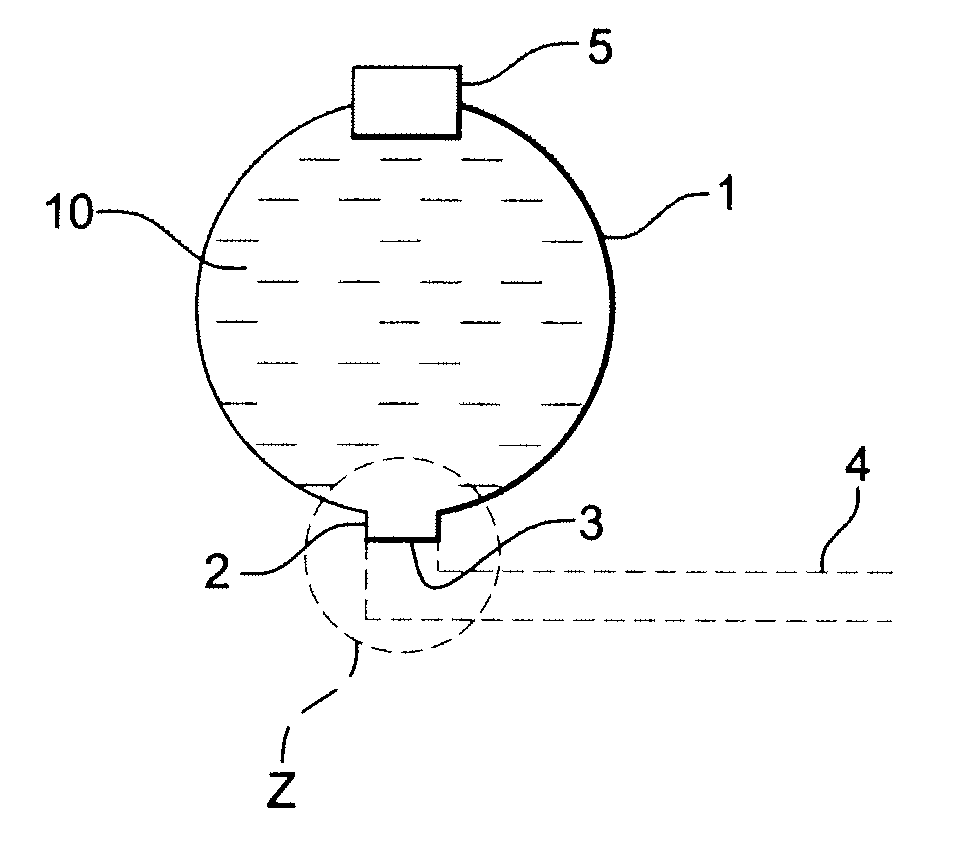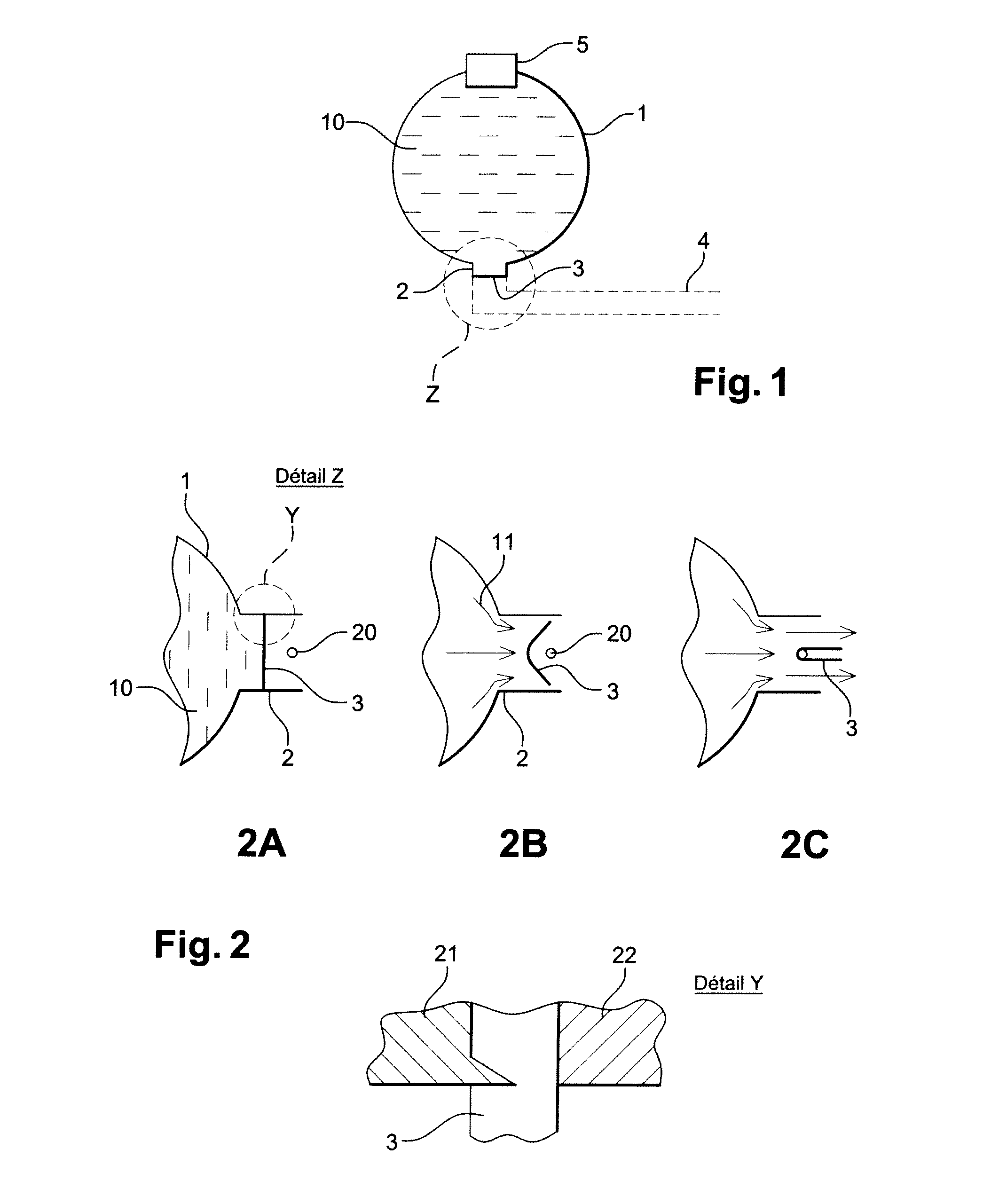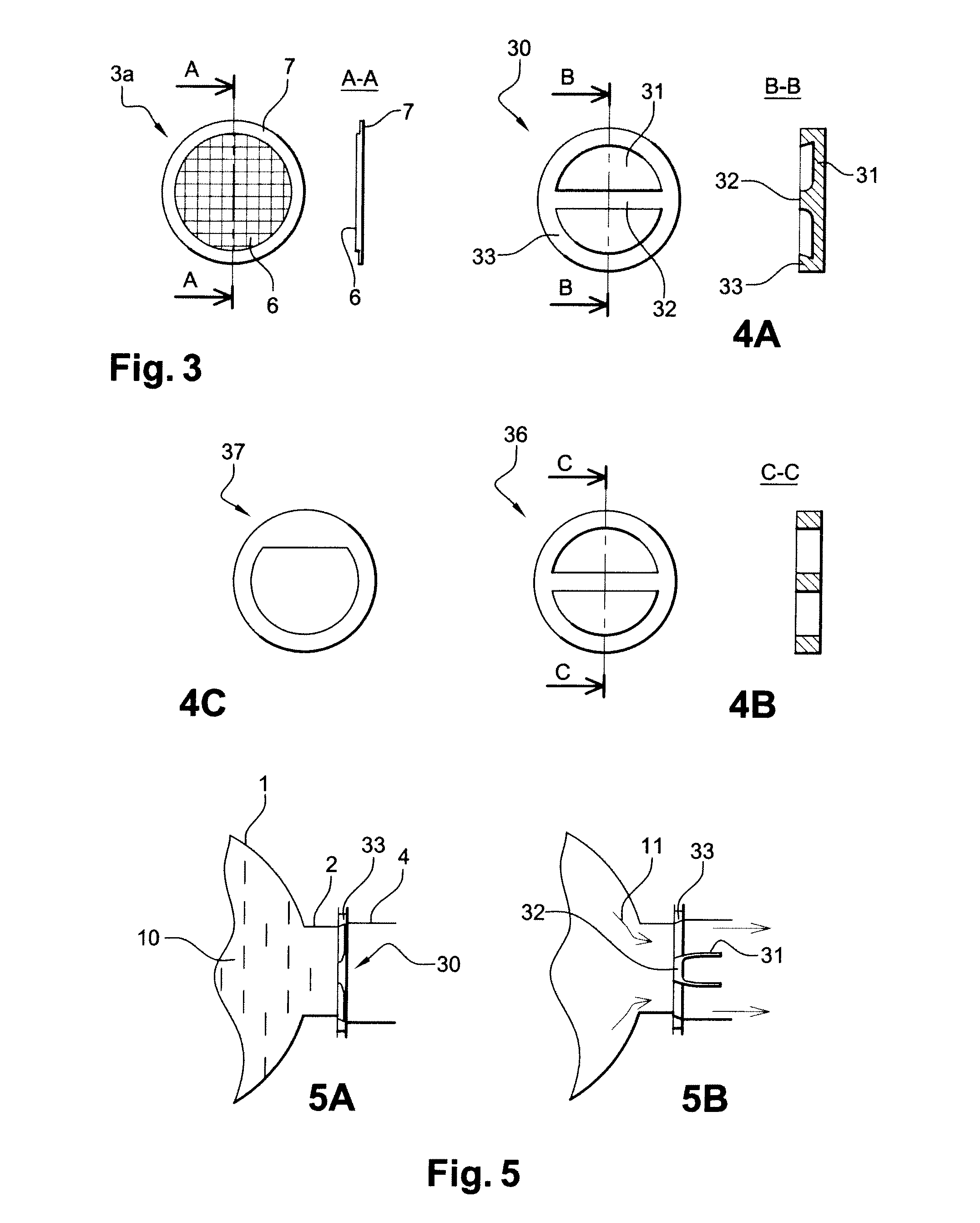Fluid ejection device
a technology of ejection device and fluid, which is applied in the direction of valve arrangement, check valve, functional valve type, etc., can solve the problems of long time-consuming maintenance, inability to offer sufficient reliability to guarantee, and inability to maintain such devices, etc., to achieve the effect of reducing load loss
- Summary
- Abstract
- Description
- Claims
- Application Information
AI Technical Summary
Benefits of technology
Problems solved by technology
Method used
Image
Examples
second embodiment
[0052]According to this second embodiment, FIG. 4A, the seal (30) includes a peripheral zone of higher thickness (33) and a central reinforced zone (32). A section with lower thickness (31) extends between these two reinforced zones.
[0053]Advantageously, the junction between the peripheral reinforced zone (33) and the thin section (31) has a profile capable of favouring breakage initiations on its periphery whereas the junction between the central reinforced zone (32) and the thin section (31) has on the contrary a profile limiting the stress concentrations. The junction of the central section (31) of the seal with its peripheral zone (33) comprises therefore a weakened zone capable of favouring and initiating the breakage of the seal.
[0054]FIG. 5A, the seal (30) is installed between the ejection port (2) and the end of the distribution circuit by gripping its reinforced peripheral zone (33) between two flanges. The peripheral ends of the central reinforced section (32) are also gri...
first embodiment
[0055]This embodiment is more reliable but the manufacture of the seals (30) is more complex to do economically for small series. Alternatively, FIG. 4B, a similar result can be obtained by using a composite seal. In this case, a part (36) corresponding to the contour of the peripheral section (33) and the central reinforced zone (32) is punched out from a metallic foil. Then a composite seal (3a) the structure of which, partially reinforced by the fibres, is equivalent to that of the corresponding variant of the first embodiment is added to this part (36), for example by bonding. When the pressure reaches a critical threshold, the central composite section (6) fails at the periphery but remains held by the foil (36) in the central zone, foil which is in this case dimensioned so as not to fail under the effect of the pressure.
[0056]According to this embodiment of the seal (30), it is also possible to use a reinforcement foil (37) the form of which allows a pivot to be made in an off...
third embodiment
[0059] FIG. 6, the seal (300) consists of an assembly of items including:
[0060]a foil sheet (301), preferably metallic and of a section sufficient to cover the complete tank port,
[0061]the said sheet is gripped, in its central section (301b), between two flanges (303) by means of screws (310) passing through the two flanges and the said sheet,
[0062]the said screws (310) are screwed transversally into an axle (320) longer than the width of the flanges which is thus solidly attached to the flanges and to the foil sheet.
[0063]The assembly consisting of the flanges (303), the axle (320) and the foil (301) thus assembled, is installed in a yoke (350) including a conduit the section of which has a form adapted to fit around the flanges (303) with a slight peripheral clearance. The yoke (350) includes two slots (321) capable of accommodating the two ends of the axle (320). For this purpose, the yoke can be made in two parts, or alternatively, the axle (320) can be initially slid through th...
PUM
 Login to View More
Login to View More Abstract
Description
Claims
Application Information
 Login to View More
Login to View More - R&D
- Intellectual Property
- Life Sciences
- Materials
- Tech Scout
- Unparalleled Data Quality
- Higher Quality Content
- 60% Fewer Hallucinations
Browse by: Latest US Patents, China's latest patents, Technical Efficacy Thesaurus, Application Domain, Technology Topic, Popular Technical Reports.
© 2025 PatSnap. All rights reserved.Legal|Privacy policy|Modern Slavery Act Transparency Statement|Sitemap|About US| Contact US: help@patsnap.com



